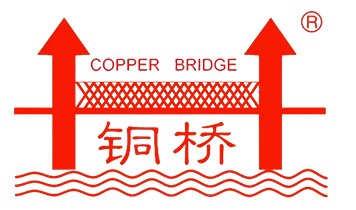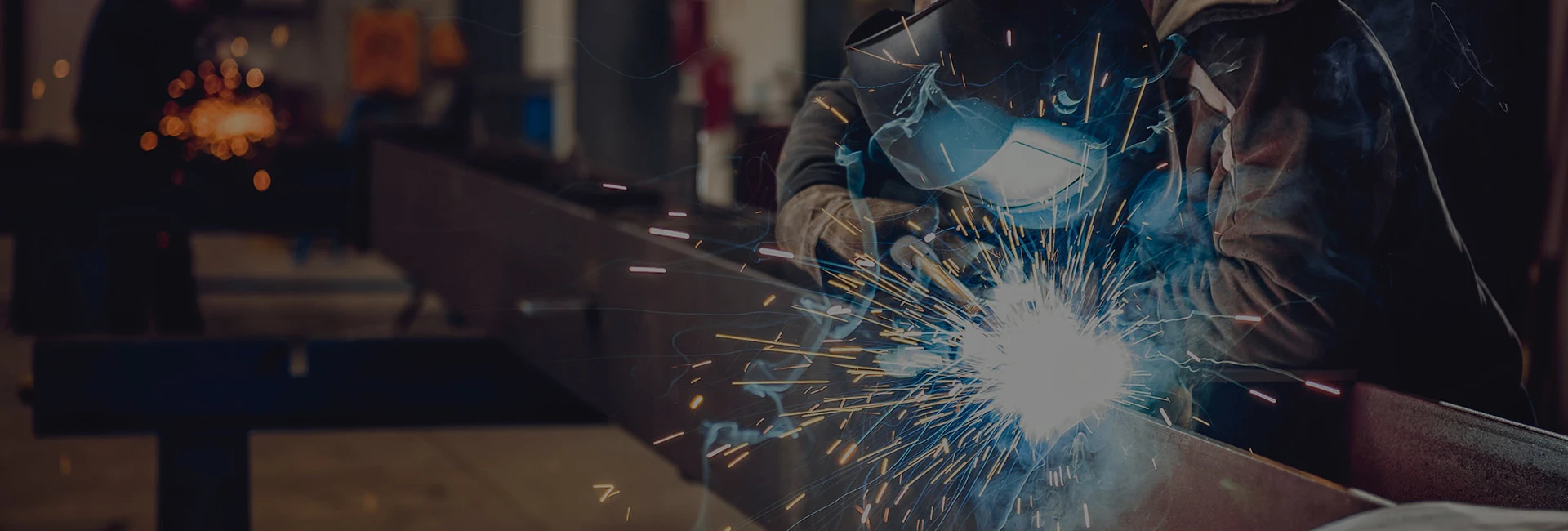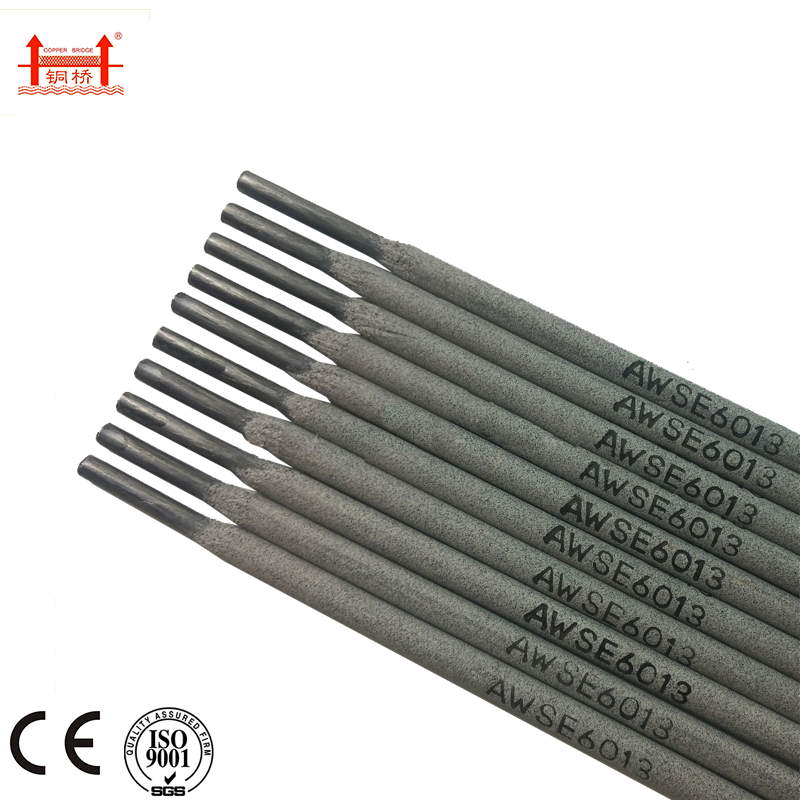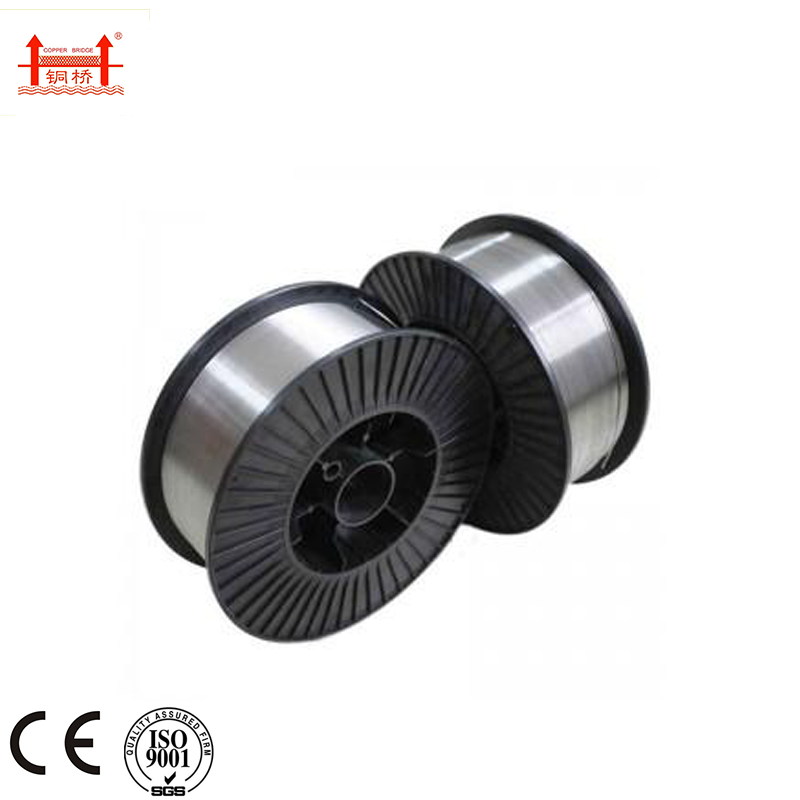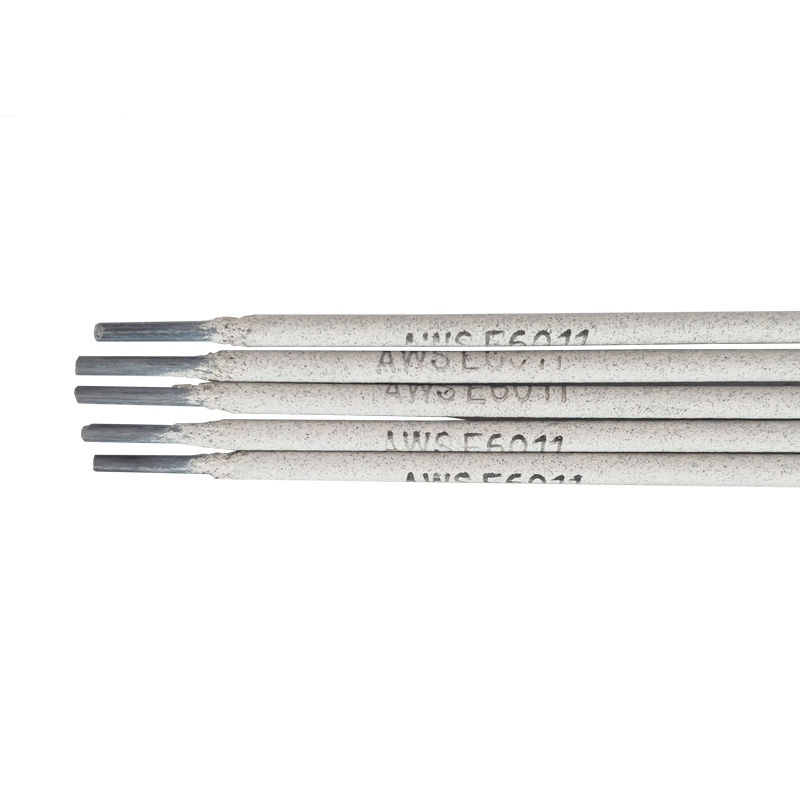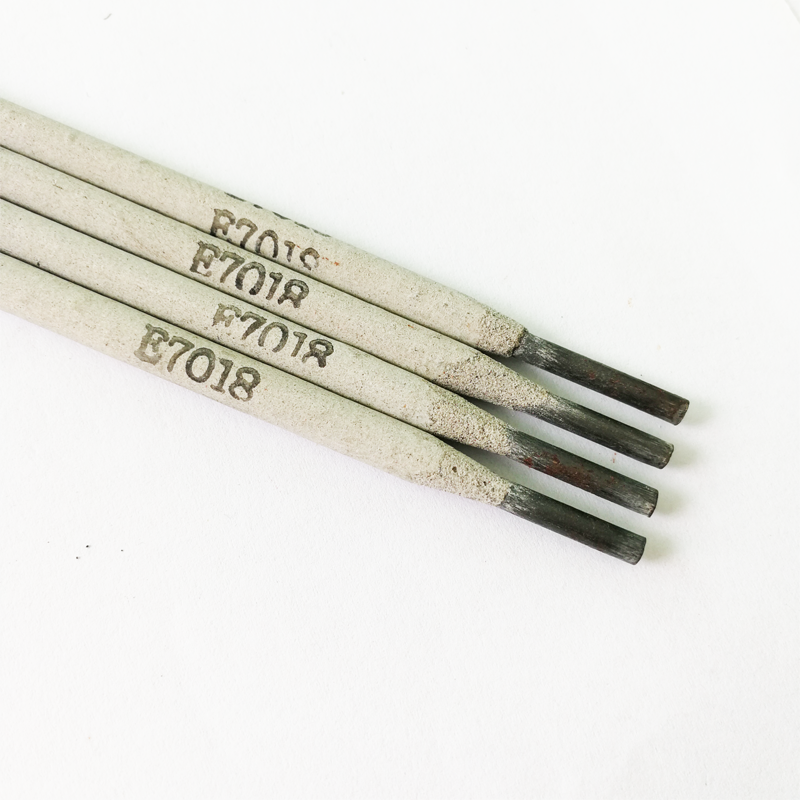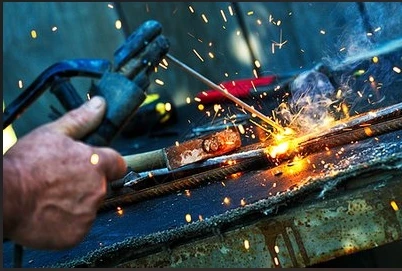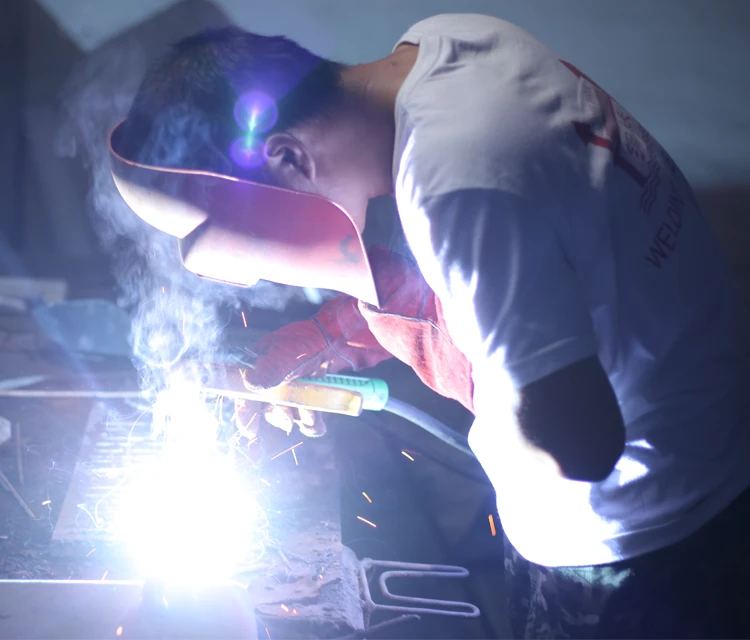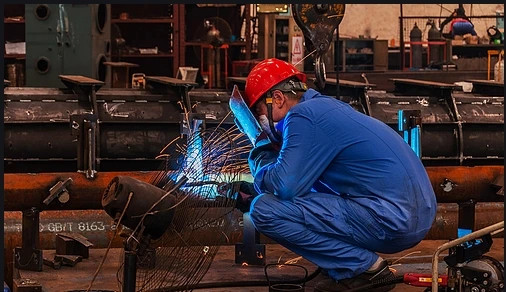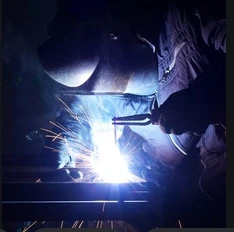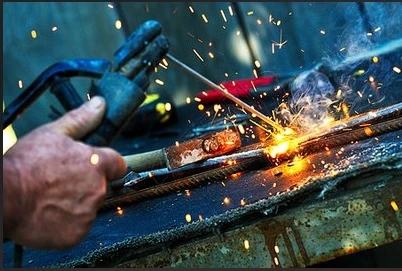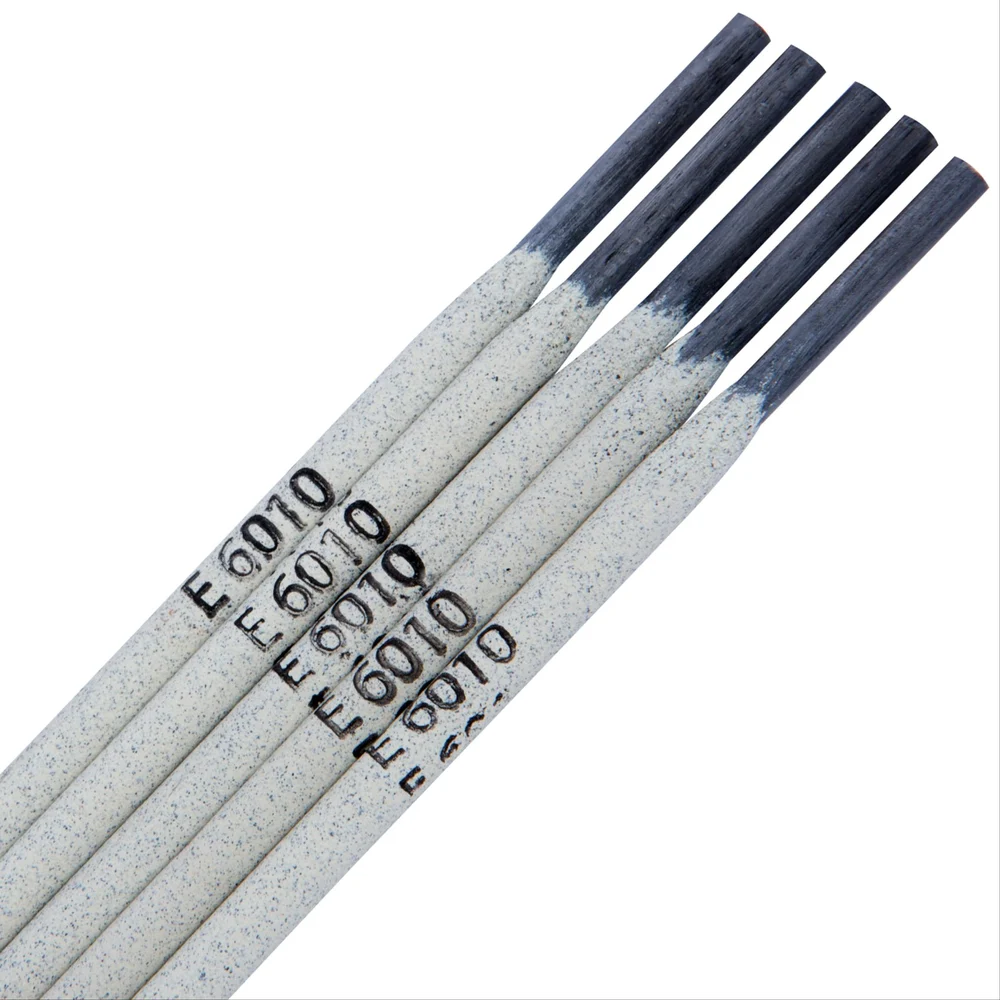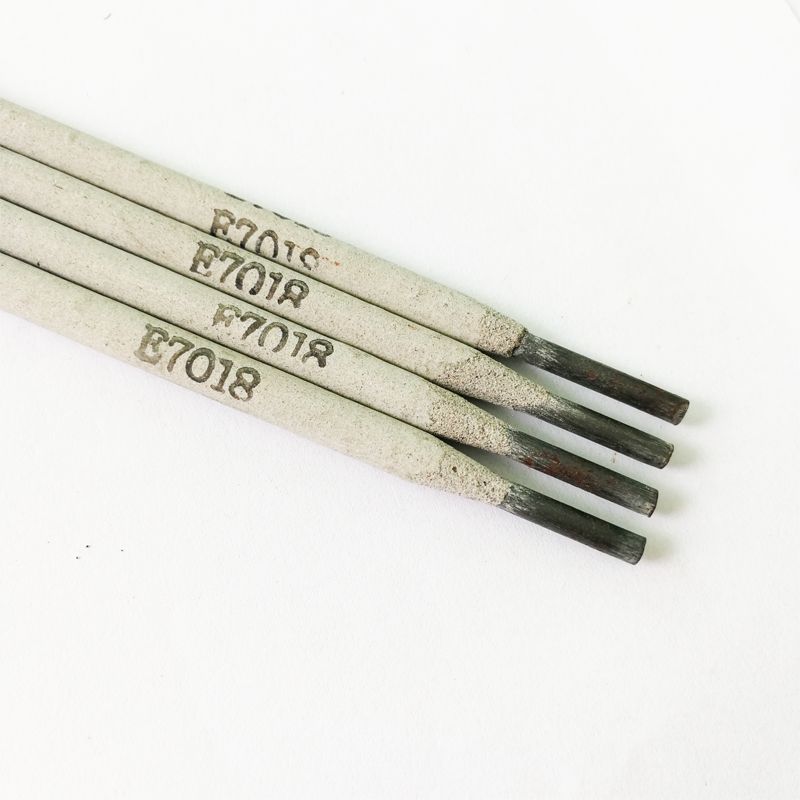E6011 vs E7018 Welding Rods: Choose the Best for Your Project
Aug . 27, 2025 06:40
The Critical Role of Welding Electrodes in Industrial Fabrication: A Deep Dive into 6011 and 7018 welding rods
In the demanding world of B2B industrial fabrication, material selection and welding methodology are paramount to structural integrity and operational longevity. Among the myriad of choices available, 6011 and 7018 welding rods stand out as indispensable tools, each engineered for distinct applications and performance requirements. Understanding the nuanced differences, technical specifications, and optimal use cases for these electrodes is crucial for engineers, procurement managers, and fabrication specialists aiming for superior quality and efficiency. This comprehensive guide will explore the manufacturing excellence, technical advantages, and diverse application scenarios of these critical consumables, providing data-driven insights for informed decision-making.
Whether tackling intricate field repairs with challenging base metal conditions or constructing high-pressure vessels demanding exceptional mechanical properties, the choice between 6011 and 7018 welding rods directly impacts project success. We delve into their unique characteristics, contrasting their arc behavior, penetration capabilities, and suitability for various welding positions and materials, ensuring a clear understanding of when and why to select each type.
Precision Engineering: The Manufacturing Process of Welding Electrodes
The production of high-quality 6011 and 7018 welding rods is a sophisticated industrial process demanding rigorous control over material composition and manufacturing parameters. It begins with meticulously sourced raw materials and culminates in a finished product engineered for consistent, reliable performance under diverse conditions. The stringent adherence to international testing standards ensures each electrode meets the exacting demands of modern industrial applications.
Core Materials and Composition:
- Core Wire: Typically made from low-carbon steel (e.g., AISI 1008 or 1010), drawn to precise diameters. The chemical composition dictates the mechanical properties of the weld metal.
- Flux Coating: This critical component is a finely ground mixture of minerals, ferroalloys, and organic compounds. For E6011 welding rod, the flux is cellulose-based, producing a strong, forceful arc. For E7018 welding rod, it is a low-hydrogen, iron powder type, designed for high deposition rates and superior mechanical properties. The flux protects the molten weld pool, provides shielding gases, deoxidizes the weld, and adds alloying elements.
Manufacturing Process Flow:
- Wire Drawing & Straightening: Hot-rolled wire rods are drawn through dies to achieve the desired diameter and then straightened and cut to specific lengths.
- Flux Preparation: Raw flux materials are accurately weighed, mixed, and then blended with a silicate binder to form a paste.
- Flux Extrusion: The core wire is fed into an extrusion press, where the flux paste is uniformly pressed onto the wire, creating the electrode coating. This process requires precise control to ensure concentricity and coating thickness.
- Baking/Drying: Electrodes undergo a carefully controlled baking process in specialized ovens. Cellulose-based electrodes (like E6011) are baked at lower temperatures to retain organic compounds, while low-hydrogen electrodes (like E7018) are baked at very high temperatures (typically 350-450°C) to remove moisture and achieve low hydrogen content.
- Tip Cleaning & Inspection: The striking end of each electrode is cleaned to facilitate arc initiation. Electrodes then undergo visual inspection for defects and dimensional accuracy.
- Packaging: Finished electrodes are packaged in moisture-resistant materials to maintain their integrity, especially critical for low-hydrogen types.
Quality Control & Testing Standards:
- Chemical Analysis: Spectrographic analysis of core wire and flux materials ensures correct composition.
- Mechanical Testing: Weld metal samples are subjected to tensile strength, yield strength, elongation, and impact strength (Charpy V-notch) tests to verify compliance with AWS (American Welding Society) A5.1 standards and ISO 2560.
- Radiographic Testing: X-ray examination assesses weld soundness, porosity, and inclusions, particularly vital for low-hydrogen welds.
- Hydrogen Content Test: For E7018, diffuse hydrogen content is measured to ensure ultra-low levels, preventing hydrogen-induced cracking.
- Moisture Resistance: Tests ensure packaging and coatings maintain integrity against atmospheric moisture.
Target Industries and Advantages:
These electrodes serve a vast array of sectors including petrochemical (pipelines, refineries), metallurgy (heavy fabrication, structural components), shipbuilding (hull construction, repairs), construction (bridges, buildings), and water supply & drainage (piping, infrastructure). Key advantages across these industries include:
- Corrosion Resistance: Engineered weld metal compositions offer enhanced resistance to various corrosive environments, crucial for longevity in harsh industrial settings.
- Energy Efficiency: Optimized arc characteristics lead to stable arcs, higher deposition rates, and less material waste, contributing to overall energy savings in welding operations.
- Extended Service Life: Welds produced with quality electrodes exhibit superior mechanical properties, leading to longer component service life and reduced maintenance.
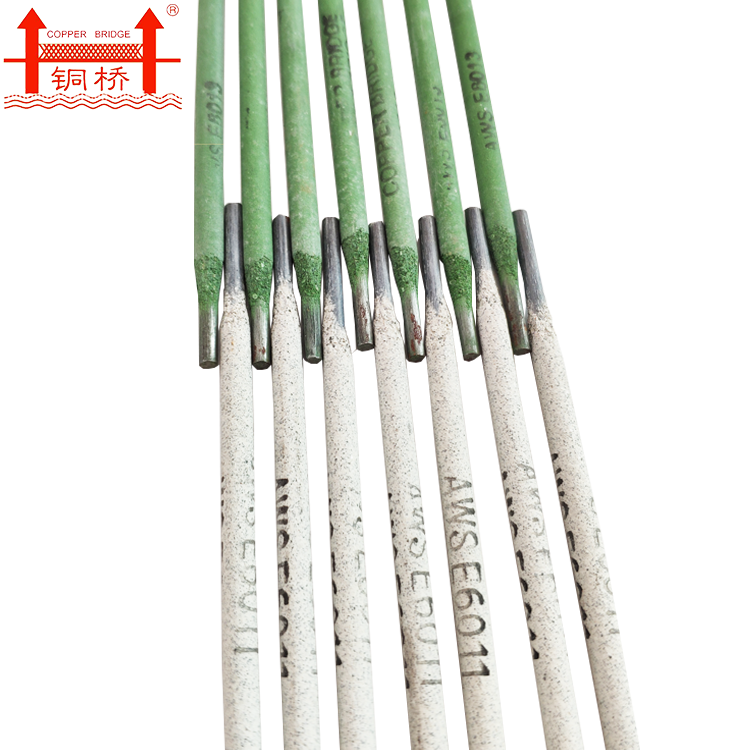
Visual representation of the manufacturing process of welding electrodes, emphasizing precision and quality.
Technical Specifications and Performance Parameters: The Core Differences
Understanding the intrinsic technical characteristics of 6011 and 7018 welding rods is fundamental to their proper selection. The AWS classification system provides a standardized means to interpret their properties. The "E" signifies electrode, the first two digits indicate tensile strength (in PSI x 1000), the third digit denotes welding positions, and the fourth digit specifies the type of coating and current.
E6011 Welding Rod: Fast-Freeze, Deep Penetration
The E6011 welding rod is characterized by a high-cellulose potassium coating, designed to produce a strong, forceful arc. This arc blasts through contaminants, making it ideal for welding on dirty, rusty, or painted surfaces without extensive preparation. It offers deep penetration and a fast-freeze slag, making it excellent for all-position welding, particularly vertical-down. It operates effectively on both AC and DC (reverse polarity) current.
E7018 Welding Rod: Low-Hydrogen, High Strength, Ductility
Conversely, the E7018 welding rod features a low-hydrogen, iron powder coating. This composition yields a smooth, stable arc, minimal spatter, and a finely rippled bead. Its primary advantage lies in producing welds with superior mechanical properties, including high tensile strength, excellent ductility, and exceptional impact strength, especially at low temperatures. The low-hydrogen characteristic is critical in preventing hydrogen-induced cracking, particularly when welding high-strength steels or thick sections. It is also an all-position electrode, suitable for AC or DC (reverse polarity).
Product Specification Table: 6011 vs. 7018 (AWS A5.1)
Below is a comparative table of typical mechanical properties and operating parameters, highlighting what's the difference between 6011 and 7018 welding rod in a data-driven format:
| Parameter | AWS E6011 | AWS E7018 |
|---|---|---|
| Tensile Strength (min) | 60,000 psi (410 MPa) | 70,000 psi (480 MPa) |
| Yield Strength (min) | 48,000 psi (330 MPa) | 58,000 psi (400 MPa) |
| Elongation in 2" (min) | 22% | 22% |
| Charpy V-notch Impact Strength (min) | Not specified / Lower | 20 ft-lbs @ -20°F (-29°C) |
| Coating Type | High Cellulose Potassium | Low Hydrogen, Iron Powder |
| Current Type | AC or DC+ | AC or DC+ |
| Welding Positions | All, especially Vertical-Down | All |
| Penetration | Deep | Medium to Deep |
Application Scenarios and Industry Trends: Leveraging Electrode Strengths
The distinct properties of 6011 and 7018 welding rods dictate their suitability for specific application scenarios, aligning with evolving industry trends that prioritize efficiency, quality, and adaptability.
What is E6011 Welding Rod Used For?
The E6011 welding rod excels in situations where less-than-ideal surface conditions are present, or when deep penetration is critical. Its forceful arc is particularly effective for:
- Field Repairs: Agricultural equipment, heavy machinery, and general maintenance work where base metals may be rusty, painted, or dirty.
- Structural Steel Fabrication: For thin to medium gauge steel in construction, where high strength but not necessarily X-ray quality is required.
- Pipe Welding (Root Pass): Especially in situations requiring good gap bridging and deep penetration to fuse the root.
- Sheet Metal and Galvanized Steel: Its aggressive arc can effectively cut through coatings and impurities.
E7018 Welding Rod Applications:
The E7018 welding rod is the preferred choice for critical applications demanding high weld integrity, excellent mechanical properties, and crack resistance. Its applications include:
- Heavy Fabrication & Structural Steel: Bridges, high-rise buildings, pressure vessels, offshore structures, and other applications requiring high-strength, ductile welds.
- Power Generation: Components in power plants, including boilers, turbines, and piping systems, where high temperatures and pressures are encountered.
- Shipbuilding: Hull construction and repair, where impact strength and resistance to fatigue are crucial.
- Pipeline Construction: Filler and cap passes for high-pressure pipelines, ensuring robust and defect-free welds.
- Welding High-Strength Steels: Used for welding low-alloy, high-strength steels where hydrogen embrittlement is a concern.
Key Industry Trends Influencing Electrode Selection:
- Increased Automation: While stick welding remains vital, the demand for electrodes that perform consistently in semi-automatic or robotic applications is growing. Manufacturers are optimizing electrode formulations for consistent feed and arc stability.
- High-Strength Steel Adoption: The use of advanced high-strength steels (AHSS) in construction and automotive sectors drives the demand for low-hydrogen electrodes like E7018, which can prevent cold cracking in these materials.
- Focus on Weld Quality & Integrity: Stricter regulatory compliance and quality assurance standards (e.g., API 1104 for pipelines, ASME Boiler and Pressure Vessel Code) necessitate electrodes capable of producing X-ray quality welds and superior mechanical properties.
- Sustainability & Efficiency: The push for greener manufacturing encourages the development of electrodes that offer higher deposition rates, less spatter, and reduced fume emission, contributing to overall operational efficiency and environmental responsibility.

Welding applications utilizing various types of electrodes in heavy industry.
Technical Advantages and Comparative Analysis: 6011 vs. 7018
The choice between 6011 and 7018 welding rods often boils down to specific project requirements, environmental factors, and desired weld characteristics. Each offers distinct technical advantages that make them superior in particular contexts.
Advantages of E6011 Welding Rod:
- Tolerance to Impurities: Its high-cellulose flux creates a powerful arc that effectively burns through rust, paint, and dirt, requiring minimal surface preparation. This makes it invaluable for field repairs and maintenance.
- Deep Penetration: The aggressive arc provides excellent penetration, ensuring strong fusion even on thicker materials and in situations with poor fit-up.
- All-Position Versatility (especially Vertical-Down): The fast-freezing slag allows for exceptional control in all positions, particularly for vertical-down welding, which can increase travel speed for certain applications.
- AC/DC Compatibility: Operates well on common AC shop power as well as DC welders, offering flexibility.
- Cost-Effectiveness: Generally less expensive and does not require special storage conditions (like oven-holding) compared to low-hydrogen electrodes.
Advantages of E7018 Welding Rod:
- Superior Mechanical Properties: Produces welds with high tensile strength, excellent ductility, and outstanding impact strength, critical for dynamically loaded structures and low-temperature applications.
- Low Hydrogen Content: Minimizes the risk of hydrogen-induced cracking (HIC) or cold cracking, a major concern when welding high-strength steels, heavy sections, or restrained joints.
- Excellent Weld Appearance and X-ray Quality: The smooth, stable arc and minimal spatter result in clean, aesthetically pleasing welds with very few defects, often meeting stringent X-ray inspection standards.
- High Deposition Rate: The iron powder in the flux contributes to higher deposition rates, improving productivity in certain applications.
- All-Position Welding: While slightly more challenging to manipulate than E6011 for vertical-down, it is still an effective all-position electrode, providing robust welds across various orientations.
Product Comparison Table: Difference Between 6011 and 7018 Welding Rods
| Feature | 6011 Welding Rod | 7018 Welding Rod |
|---|---|---|
| Flux Type | High Cellulose Potassium | Low Hydrogen, Iron Powder |
| Arc Characteristics | Forceful, Digging, Aggressive | Smooth, Stable, Quiet |
| Penetration | Deep | Medium to Deep |
| Slag Removal | Fast-freezing, often requires chipping | Self-lifting, easily removable |
| Surface Tolerance | Excellent on dirty, rusty, painted surfaces | Requires clean surfaces for optimal results |
| Weld Quality (X-ray) | Good, but typically not X-ray quality | Excellent, often X-ray quality |
| Moisture Sensitivity | Low | High (requires proper storage/baking) |
| Typical Base Metals | Mild steel, galvanized steel, dirty steel | Mild steel, low alloy high-strength steels |
The selection process involves a careful assessment of the base material, joint design, welding position, required mechanical properties, and compliance with industry codes. While E6011 offers versatility and forgiveness in challenging environments, E7018 delivers superior metallurgical integrity for critical applications.
Vendor Comparison and Customized Solutions
Choosing the right supplier for 6011 and 7018 welding rods is as crucial as selecting the electrodes themselves. A reputable vendor offers not just products but also guarantees of quality, consistency, and technical support. For instance, the Copper Bridge Brand Welding Rod AWS 6011 signifies a commitment to quality and adherence to industry standards, reflecting a manufacturer's dedication to performance.
Key Considerations for Vendor Selection:
- Certifications and Compliance: Verify adherence to international standards such as AWS A5.1, ISO 9001, and specific client project certifications. Authorized references like ABS, DNV, Lloyd's Register are strong indicators of quality.
- Quality Control: Inquire about their manufacturing process, quality assurance protocols, and internal testing capabilities. Consistent batch-to-batch quality is paramount.
- Technical Support and Expertise: A vendor that provides expert technical guidance, including troubleshooting and application-specific recommendations, adds significant value.
- Years of Service and Client Portfolio: Longevity in the industry and a robust client base (especially prominent partners) demonstrate reliability and trust.
- Lead Times and Supply Chain Reliability: For B2B operations, consistent supply and predictable lead times are crucial to avoid project delays.
Customized Solutions for Niche Applications:
Beyond standard offerings, leading manufacturers can provide customized solutions to address unique project challenges:
- Specialized Flux Formulations: For applications requiring enhanced corrosion resistance, specific mechanical properties, or improved operability on certain exotic materials.
- Custom Packaging: Tailored packaging to protect electrodes in extreme environments or for specialized robotic feeders.
- Technical Consultancy: Collaborative R&D with clients to develop entirely new electrode types or optimize existing ones for highly specialized welding procedures.
- Inventory Management: Vendor-managed inventory (VMI) services to ensure a continuous supply and reduce client storage costs.
The ability of a vendor to offer these customized services highlights their commitment to partnership and problem-solving, going beyond mere product delivery to become an integral part of the client's operational success.
Real-World Application Case Studies and Customer Experience
Examining practical applications provides tangible proof of the performance capabilities and advantages of 6011 and 7018 welding rods. These case studies illustrate how specific electrode characteristics translate into real-world benefits for our clients.
Case Study 1: Remote Pipeline Repair (E6011)
A major energy company faced an urgent repair of a crude oil pipeline in a remote, challenging terrain. The pipe surface was heavily corroded, and extensive pre-cleaning was impractical due to time constraints and environmental regulations. The engineering team selected E6011 welding rod (specifically 3.2mm diameter) for the root and hot passes due to its aggressive arc and deep penetration, which effectively cut through surface impurities and ensured strong fusion. The fast-freezing slag allowed for rapid multi-pass welding in restricted access areas, significantly reducing repair time. Post-weld inspection revealed sound welds with excellent penetration, preventing costly downtime and demonstrating the `difference between 6011 and 7018` for such field conditions. Customer feedback highlighted the electrode's reliability under adverse conditions and its ease of use for their field welders.
Case Study 2: High-Pressure Vessel Fabrication (E7018)
A leading manufacturer of industrial pressure vessels required welding electrodes for constructing large-scale, high-pressure storage tanks made from SA-516 Grade 70 carbon steel. The project demanded welds with superior mechanical properties, excellent impact toughness at low temperatures, and strict adherence to ASME Boiler and Pressure Vessel Code (Section VIII). E7018 welding rod (primarily 4.0mm and 5.0mm diameters) was chosen for all passes. Its low-hydrogen characteristics were critical in preventing hydrogen-induced cracking in the thick sections. The high deposition rates of the E7018 electrodes contributed to efficient fabrication, while the smooth, stable arc resulted in minimal spatter and excellent bead appearance, reducing post-weld grinding. All welds passed rigorous ultrasonic and radiographic testing with zero defects, confirming the electrode's capability for critical applications requiring robust integrity. The client reported significant savings in post-weld clean-up and a high first-pass weld quality rate, attributed directly to the consistent performance of the electrodes.
Customer Feedback Highlights:
"For our structural steel projects, the consistency of Copper Bridge Brand AWS 6011 is unmatched. It penetrates deep, handles rough surfaces, and our welders love the arc stability. It’s a workhorse for our daily fabrication needs." - Lead Fabricator, Large Construction Firm.
"When we build pressure vessels, there's no compromise on weld integrity. The AWS 7018 electrodes deliver every time on mechanical properties and X-ray quality. Their technical support team also helped us optimize our procedures for maximum efficiency." - Welding Engineer, Petrochemical Equipment Manufacturer.
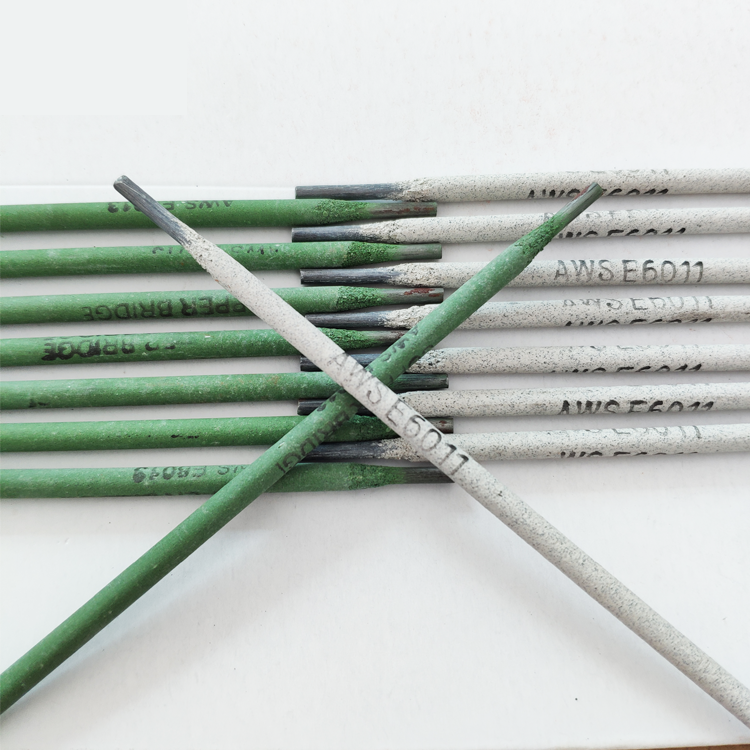
Precision welding in a controlled industrial environment, where electrode selection is critical.
Ensuring Trustworthiness: FAQ, Lead Time, Warranty & Support
Frequently Asked Questions (FAQ):
- Q: What is the primary difference between 6011 and 7018 welding rods?
- A: E6011 is a cellulose-based, fast-freeze electrode offering deep penetration and tolerance for dirty surfaces, ideal for field repairs. E7018 is a low-hydrogen, iron powder electrode providing superior mechanical properties, high ductility, excellent impact strength, and X-ray quality welds, suitable for critical structural applications.
- Q: Can I use `6011` for welding high-strength steels?
- A: While E6011 offers good strength (60,000 psi tensile), it is generally not recommended for high-strength steels or critical applications where hydrogen-induced cracking is a concern. For such materials, low-hydrogen electrodes like E7018 are essential due to their lower risk of hydrogen embrittlement and superior mechanical properties.
- Q: What special storage is required for E7018 electrodes?
- A: E7018 electrodes are highly sensitive to moisture absorption, which can increase hydrogen content and lead to weld defects. They must be stored in hermetically sealed containers or continuously held in a heated electrode oven (typically 100-150°C) after opening, as per AWS A5.1 guidelines, to maintain their low-hydrogen characteristics.
- Q: Are 6011 and 7018 welding rods compatible with both AC and DC welding machines?
- A: Yes, both E6011 and E7018 are designed to operate on both Alternating Current (AC) and Direct Current Electrode Positive (DC+ or DCEP) polarity, offering versatility for various welding equipment setups.
Lead Time and Fulfillment Details:
We understand the critical nature of timely material delivery for B2B operations. Our standard lead time for in-stock `6011` and `7018` electrodes typically ranges from 3-5 business days for domestic shipments, with international orders varying based on destination and customs. For large volume or customized orders, specific lead times will be provided upon inquiry, ensuring transparent and reliable planning for your projects. We maintain robust inventory levels and efficient logistics to minimize disruptions.
Warranty Commitments:
All our welding electrodes, including Copper Bridge Brand AWS 6011, are manufactured under stringent ISO 9001 certified quality management systems and are warranted against defects in material and workmanship for a period of 12 months from the date of purchase. This warranty covers product integrity and performance in line with AWS A5.1 standards when stored and used according to manufacturer specifications. Our commitment to quality ensures confidence in every purchase.
Customer Support Information:
Our dedicated customer support team and technical specialists are available to assist you with product selection, application guidance, troubleshooting, and order inquiries. We offer comprehensive after-sales support to ensure optimal performance of our welding electrodes. You can reach us via:
- Phone: +86-XXX-XXXX-XXXX (Business Hours: 9:00 AM - 5:00 PM GMT+8)
- Email: sales@jinlongweldingelectrode.com
- Website: Visit our website for a comprehensive knowledge base and live chat support.
We are committed to building long-term partnerships by providing unparalleled product quality and responsive service.
Conclusion: Strategic Electrode Selection for B2B Success
The distinction between 6011 and 7018 welding rods is not merely academic; it is a strategic decision that underpins the success of diverse industrial welding operations. From the rapid, forgiving arc of the E6011 ideal for challenging field conditions and general fabrication, to the high-integrity, low-hydrogen performance of the E7018 crucial for critical structural components and pressure vessels, each electrode serves a vital purpose. By understanding their manufacturing excellence, technical specifications, application-specific advantages, and partnering with a reliable, quality-focused vendor, B2B decision-makers can optimize their welding processes, ensure compliance with stringent industry standards, and ultimately enhance the durability and safety of their fabricated products. The commitment to quality, backed by rigorous testing and comprehensive support, ensures that these fundamental welding consumables continue to be cornerstones of modern industrial infrastructure.
References
- American Welding Society. (2018). *AWS A5.1/A5.1M:2017 Specification for Carbon Steel Electrodes for Shielded Metal Arc Welding*.
- ISO. (2018). *ISO 2560:2009 Welding consumables — Covered electrodes for manual metal arc welding of non-alloy and fine grain steels — Classification*.
- The Lincoln Electric Company. (2019). *Welding Guide for Stick Welding Electrodes (SMAW)*.
- Miller Electric Mfg. LLC. (2020). *Shielded Metal Arc Welding (SMAW) Handbook*.
- ASM International. (2003). *ASM Handbook, Vol 6: Welding, Brazing, and Soldering*.
Related Video


